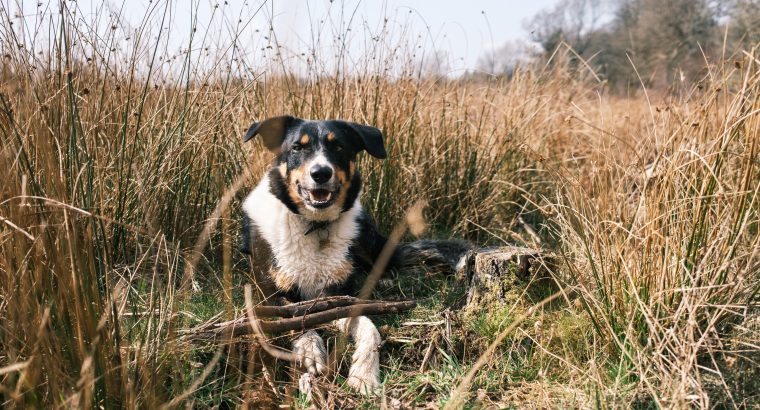Keeping Your Pet Safe in Australia’s Climate
Australia is renowned for its diverse climates, from the tropical humidity of Queensland to the temperate regions of Victoria and the arid expanses of the Outback. While the vast and varied landscapes make Australia unique and captivating, they also present specific challenges for pet owners. The country’s climate is not only about heat; it encompasses everything from torrential rains to bushfires and even cyclones. Given these extremes, how can you keep your furry friend safe and sound?
Understanding Australia’s Climate
Australia’s immense landmass stretches across a spectrum of climates due to its expansive geographical size, variations in latitude, and the influences of topographical nuances. For pet owners, understanding these different climatic zones is integral to ensuring their companions’ well-being and safety.
Tropical North
In the Tropical North, areas like Queensland‘s coast, the top end of the Northern Territory, and the northwestern parts of Western Australia dominate. This zone remains warm throughout the year. It experiences two distinct seasons: the Wet, which arrives in the summer, and the Dry, which signifies winter.
During the Wet season, high humidity rules, accompanied by monsoonal rains and sporadic cyclones. On the other hand, the Dry season brings clear skies and diminished humidity levels. The humidity during the Wet season can be quite challenging for pets, leading to potential heat stress. Moreover, the intense rains can sometimes result in flooding, and cyclones can create disruptions in standard living environments.
Arid Interior
Moving towards the Arid Interior, the vast desert expanses of central Australia come to mind. This includes large sections of Western Australia, South Australia, and the Northern Territory. In these arid regions, summers range from hot to extremely scorching, and rainfall is scant.
While winters are comparatively mild, the nights can get surprisingly cold. For pets living in this zone, the intense summer heat poses significant risks of dehydration and heatstroke, especially without appropriate care. The sharp temperature fluctuations between daytime and nighttime can also be a challenge for some animals.
Temperate South
The Temperate South covers regions like Victoria, a majority of New South Wales, Tasmania, the southeastern part of South Australia, and the southwestern corner of Western Australia. This area is unique as it experiences all four seasons. Summers here are pleasantly warm but can sometimes escalate into intense heatwaves. Winters, while cool, bring rainfall that’s more uniformly spread throughout the year.
Some elevated areas, especially in Tasmania and Victoria’s highlands, even receive winter snow. For pets, summer heatwaves can be perilous, leading to conditions like dehydration and potential burns from scalding surfaces. In contrast, the colder regions during winter may necessitate additional warmth and protection. Constant rainfall can keep the environment damp, leading to concerns like fungal infections if pets remain wet.
Mediterranean Western Coast
Along the Mediterranean Western Coast, primarily around Perth, the climate mirrors the Mediterranean’s characteristics. Summers are hot and devoid of moisture, while winters are mild and receive most of the annual rainfall.
Pets in this climate face challenges similar to those in the temperate regions, especially during the summer heatwaves. The consistent wetness during winter can create a breeding ground for fungal and bacterial issues if pets aren’t kept dry.
Subtropical Eastern Coast
Finally, the Subtropical Eastern Coast runs along the eastern coastline, enveloping parts of New South Wales and southern Queensland. The climate here is characterized by its warm, humid summers punctuated by considerable rainfall and contrasted by its mild, drier winters.
For pets, the pervasive humidity can be particularly burdensome, leading to instances of heat stress. Furthermore, summer downpours can be exceptionally heavy, leading to damp conditions and the potential for floods in some regions.
Keeping Your Pet Safe in Australia’s Climate
Heat-related Issues and Mitigation:
Dehydration and Heat Stroke:
Pets, particularly dogs, are prone to heat stroke if they don’t have access to shade and fresh water. Symptoms include excessive panting, drooling, reddened gums, lethargy, and even unconsciousness.
Mitigation:
- Always provide ample fresh water.
- Avoid walking pets during peak heat hours.
- Use cooling mats or vests for dogs.
Hot Surfaces:
Hot pavements or sands can burn your pet’s paws.
Mitigation:
- Walk your pet during the cooler parts of the day.
- Use protective booties if necessary.
Bushfires:
Australia’s bushfire season can be particularly intense, posing threats to both humans and pets.
Preparedness:
- Create a bushfire survival plan that includes your pets.
- Keep pet emergency kits ready.
- If you live in a high-risk area, consider installing a sprinkler system.
Flooding and Heavy Rains:
Parts of Australia experience heavy rains which can result in floods.
Safety Tips:
- Always keep pets indoors during heavy rains.
- Ensure they wear identification tags in case they get lost.
- Familiarise yourself with local evacuation centres that accept pets.
Tropical Storms and Cyclones:
These are common in northern parts of Australia.
Safety Measures:
- Ensure your home is cyclone-ready and consider pet-friendly shelters.
- Secure outdoor items so they don’t become hazardous debris.
- Always have an emergency kit for your pets, including food, water, and medications.
Local Wildlife Interactions:
Australia is home to some of the world’s most venomous creatures, which can pose a threat to curious pets.
Prevention:
- Supervise your pets during outdoor activities.
- Train them to avoid snakes, spiders, and other potentially harmful creatures.
- Regularly check your property for the presence of such creatures.
Skin Protection:
Just like humans, pets can suffer from sunburn, especially those with light or thin fur.
Protection:
- Apply pet-safe sunscreen to vulnerable areas like the nose and ears.
- Provide shaded areas for your pets during the hottest parts of the day.
Disease Prevention:
Warm and humid climates can be breeding grounds for parasites like ticks and fleas.
Protection:
- Regularly use preventative treatments.
- Regularly inspect your pets for signs of infestations.
Conclusion
Australia’s diverse climate offers a beautiful backdrop for living, but it’s essential to be proactive in safeguarding our pets against the environmental challenges it presents. By understanding the risks and preparing for them, you can ensure that your beloved companions remain healthy and happy, no matter the weather. Remember, a little bit of prevention can go a long way in ensuring the safety and wellbeing of your pet in the land down under, be it on a Sydney tour or exploring the outbacks. Whether you’re looking for a Dachshund for sale in NSW or a Goldendoodle for sale in Brisbane, PetsForHomes has you covered.






